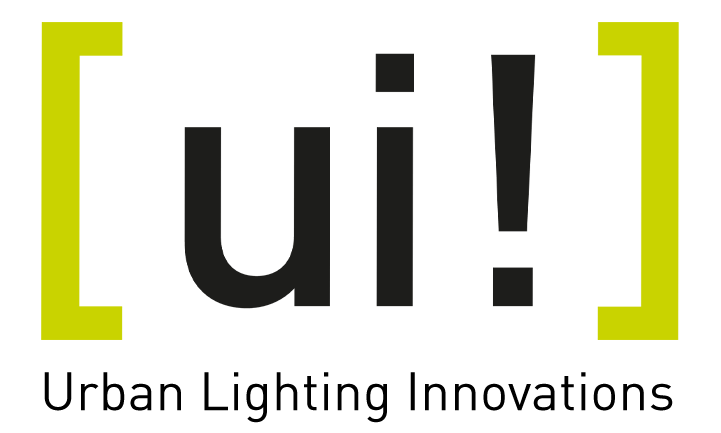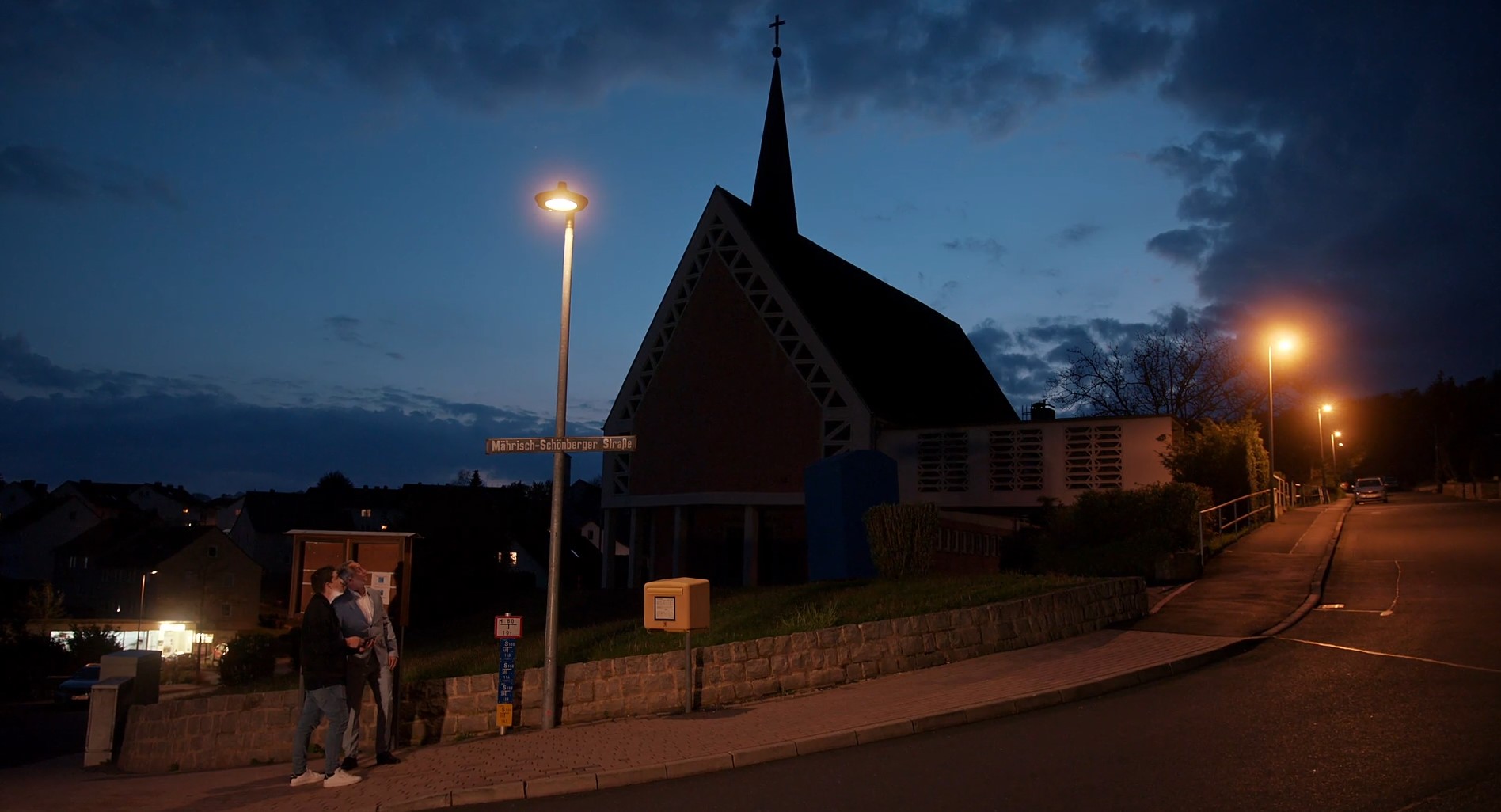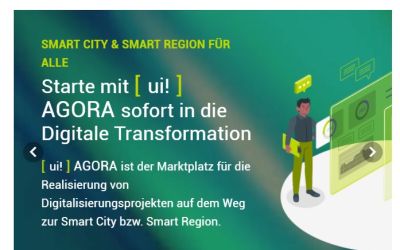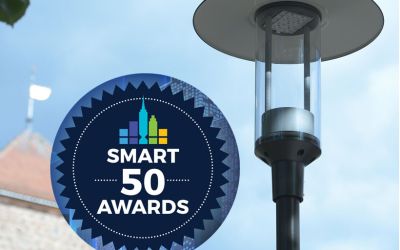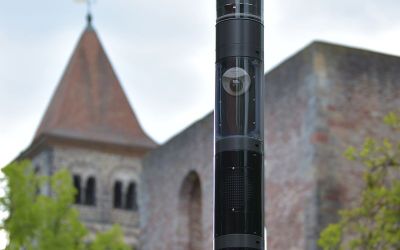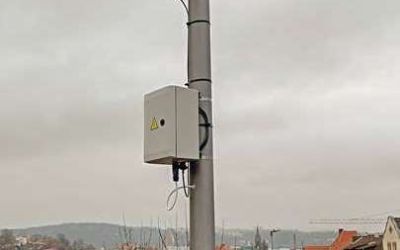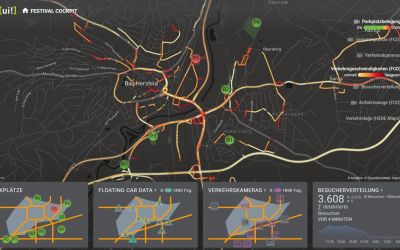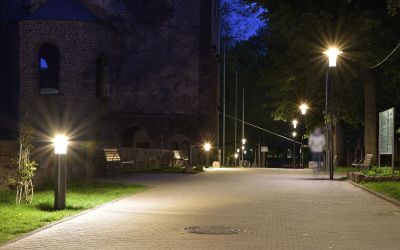"Light as a Service" - model project in Bad Hersfeld for new street lighting
Lighting in public spaces should be bright, but at the same time save energy. The sense of security of citizens must be taken into account, however, "light pollution" and CO2 emissions should be minimized. Keywords such as "insect-friendliness" describe further goals.
This dilemma, with sometimes conflicting objectives, has not been reliably resolved by current street lighting systems in many cases to date. For this reason, a model project of the district town of Bad Hersfeld, Deutsche Bank, Microsoft, [ui!] Urban Lighting Innovations and Stadtwerke Bad Hersfeld tested and implemented new approaches over the course of a year.
The core thesis is that the above-mentioned conflicts of requirements are so complex that they can no longer be solved by static street lighting or human operators.
The path to success can only be via dynamic-adaptive lighting control using artificial intelligence (AI).
154 new street lights were installed in three project areas of the city of Bad Hersfeld, which on the one hand had not yet been converted to LED technology and on the other hand represent a wide range of different requirements for public lighting. More specifically, they include
- the northern city ring with high traffic volume,,
- Berliner Strasse as a connection between the southern ring road and national roads,
- and parts of the Eichhofsiedlung residential area.
The intense recording of the before and after situation of all lighting locations in the three project areas was the basis for concrete and measurable project results. The entire project was scientifically accompanied by the Lighting Technology Department of the Technical University of Berlin.
A very important prerequisite for the project was the procurement of the latest generation of street lights, which was made available for the project for the first time in this form. They can also process signals from the lighting control system and the artificial intelligence (AI) developed.
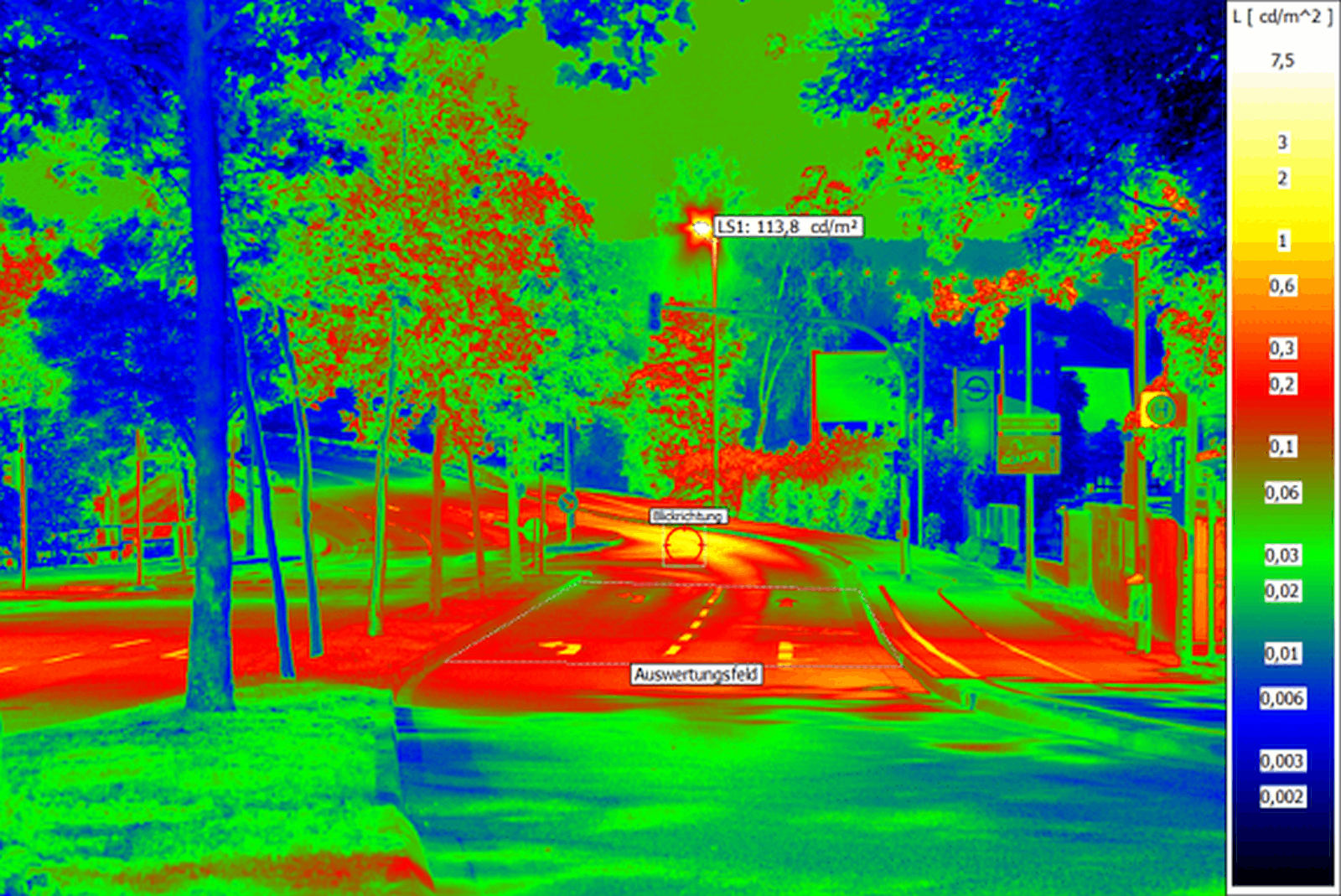 The products used, in the project from the Schréder company, can also regulate the color temperature between a neutral white tone and a yellowish light, otherwise referred to as "amber" (in the project between 3,000 and 2,200 Kelvin). In addition, dynamic dimming can be used to adapt the light distribution and brightness to the road conditions in a given situation.
The products used, in the project from the Schréder company, can also regulate the color temperature between a neutral white tone and a yellowish light, otherwise referred to as "amber" (in the project between 3,000 and 2,200 Kelvin). In addition, dynamic dimming can be used to adapt the light distribution and brightness to the road conditions in a given situation.
The lighting fixtures all have a communication interface, which they use to send data about their operating states, consumption and malfunctions on the one hand. On the other hand, the lighting fixtures receive control commands from the lighting management system, the existing urban data platform [ui!] UrbanPulse and from sensors installed in the project area.
A large number of measuring points and sensors feed data into the urban data platform to record the traffic, weather and environmental influences that apply at any given time. From this dataset, the project's AI-based software solution calculates, continuously and in real-time for each individual luminaire, the lighting control required and passes this information on to the lighting control system - including further energy consumption calculations and operating forecasts.
In addition to the fully automated AI and sensor technology, the lighting fixtures also receive control signals from a completely different source. In the Eichhofsiedlung residential area, citizens accessed the street lighting through their private devices using an app developed exclusively as part of the project.
Thus, one or more lighting fixtures could be tested with regard to color temperature and light intensity. The light distribution, i.e. the over-radiation onto the house facade, the driveway or one's own living room, could also be changed for 10 minutes at a time. After that, the control program called up the previous settings again.
The extensive information streams from the model project are processed by the urban data platform. It is the interactive link between the lighting control management system on the one hand and the sensors or the citizen app on the other. Finally, the information obtained in the project is also processed from this data platform for further applications, such as communal energy monitoring.
Results
From a large selection of worldwide applicants, the model project in Bad Hersfeld in the USA was chosen as the winner of this year's "Smart 50 Awards" - as only one of two European projects.
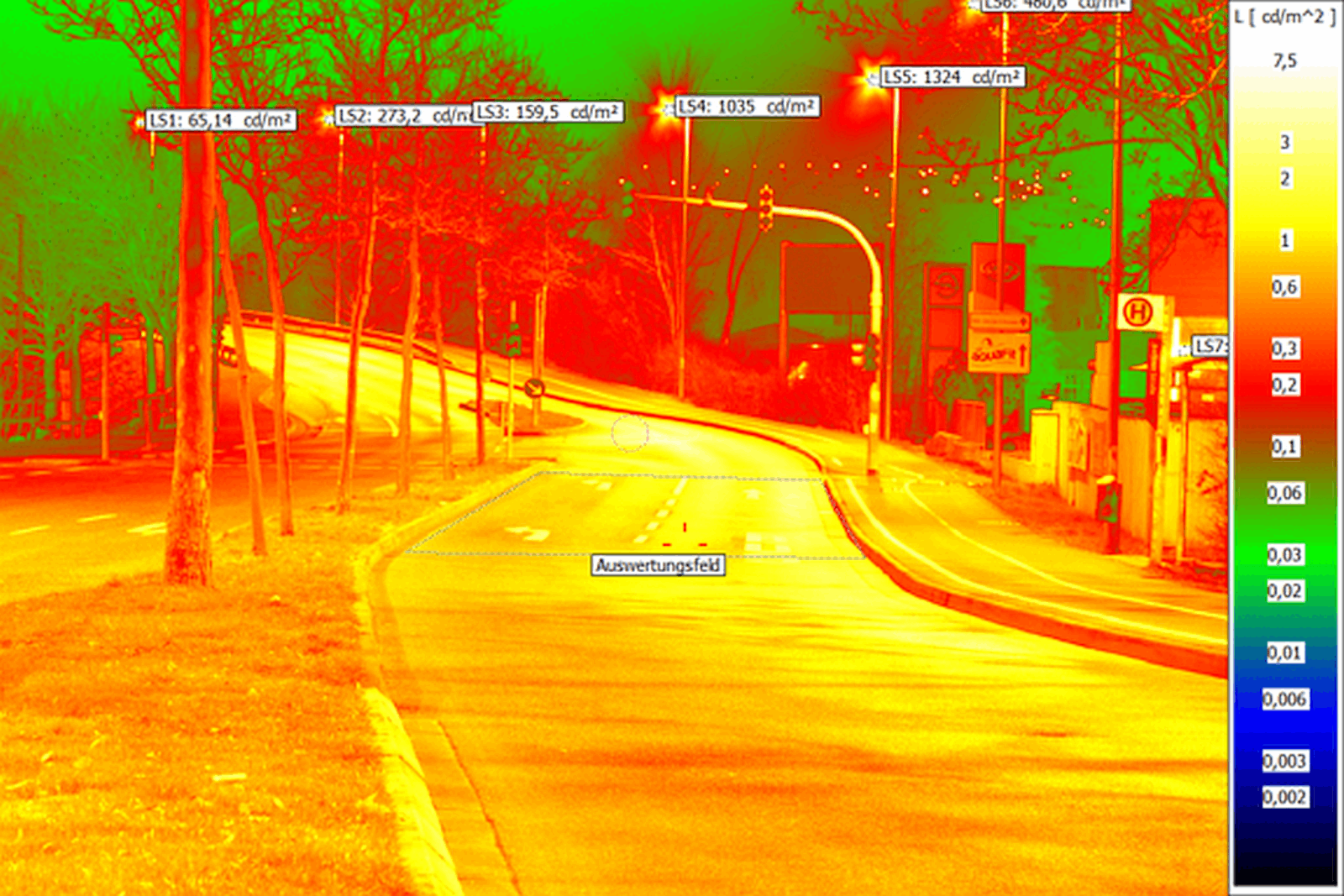 From Bad Hersfeld's point of view, too, the "Light as a Service" model project has fully met and in large part exceeded the expectations of the project participants and the city's politicians.
From Bad Hersfeld's point of view, too, the "Light as a Service" model project has fully met and in large part exceeded the expectations of the project participants and the city's politicians.
- The intended energy consumption and CO2 savings have been fully achieved and further expanded through dynamic lighting control.
- o By using the latest generation of light fixtures, between 59 % and 77 % energy is saved compared to the actual state, depending on the local site conditions. These values could be increased to 71 % to 86 % with the use of dynamic control!
- o The reduction in consumption amounts to around 65,000 kWh per year for the 154 light fixtures used in the project.
- o CO2 reduction amounts to around 27 tons per year.
- The dynamic-adaptive street lighting system can be adapted to individual fixtures and groups at any time without major maintenance effort, for example to changes in traffic volume, weather conditions, detour situations or special events.
- Sensor-based detection of wet road conditions leads to significant additional energy savings and reduced glare effects by lowering the dimming level of the street lights.
- Traffic safety is ensured. This also applies if, in order to reduce light pollution effects (due to altered light cones) and to increase insect-friendliness, more warm white color temperatures and stronger dimming are implemented in night periods.
- The model project offers better fault analysis and increased plant availability. The time span until defects become apparent and maintenance takes effect is shortened.
Outlook
The scalability of the pilot project to an overall retrofit scenario of Bad Hersfeld's street lighting is possible - and will be implemented. Instead of the previous step-by-step annual self-financing for the energy modernization of the street lighting, the Bad Hersfeld city council has decided on a new service model based on the successful project.
In 2023, around 1,500 to 2,000 state-of-the-art light fixtures and sensor technology will be procured in their entirety for the street lights still to be retrofitted in Bad Hersfeld and operated over a period of 10 years with the help of a service provider - who, in addition to the investment, will also be responsible for cleaning, maintenance, servicing and the fault clearance and replacement of failed components.
The capital expenditures can thus be spread over a long-term for the city and thus do not require a large, additional credit authorization.
In this way, the quality gains demonstrated in the model project, the measured CO2 reductions and the significant reductions in electricity consumption for the rest of Bad Hersfeld's street lighting can be realized "in one fell swoop" - and not, as was previously the case, only with a time delay in annual steps.
Source: stadt+werk, November-/Dezemberheft 2022
